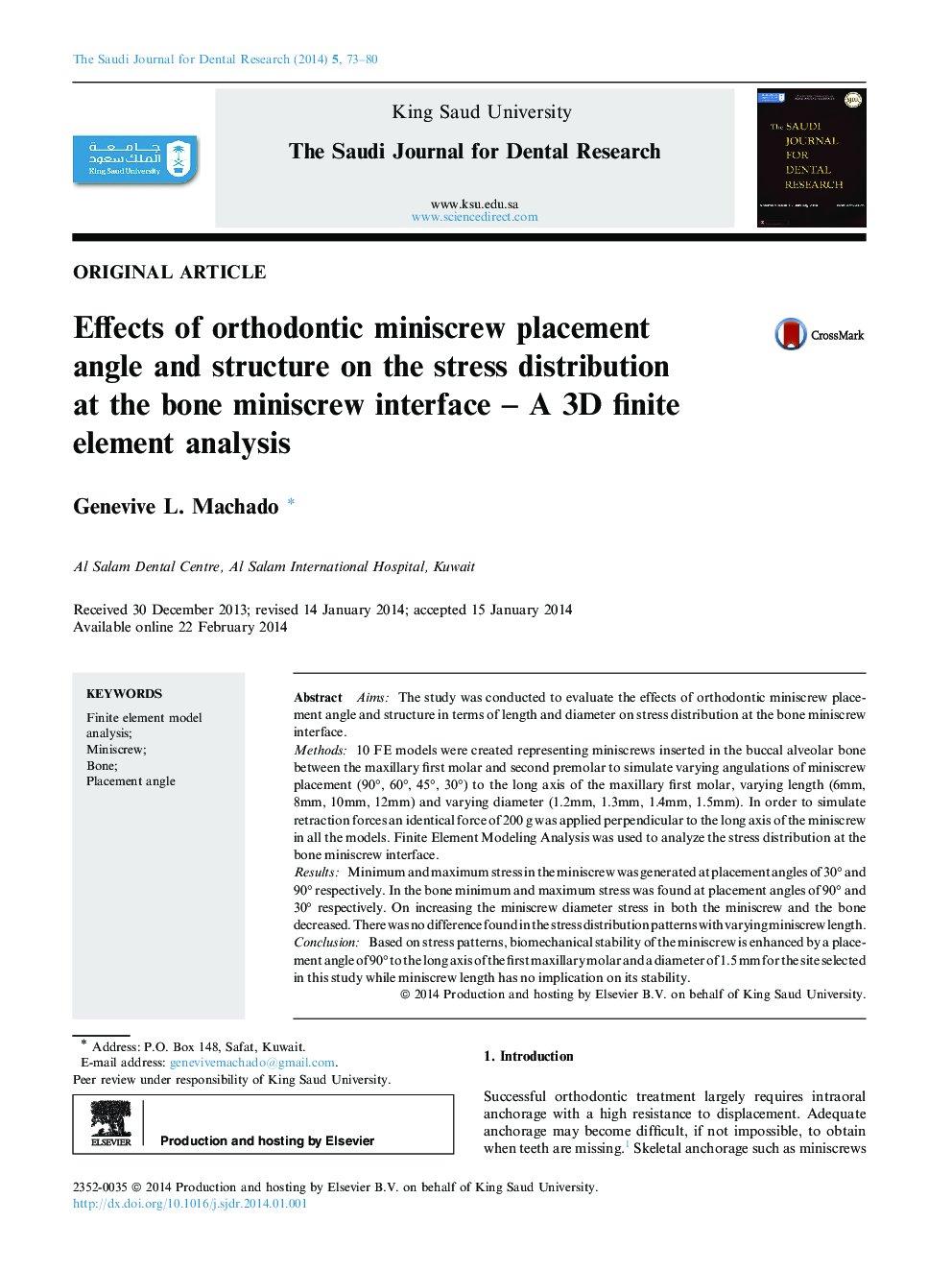| Article ID | Journal | Published Year | Pages | File Type |
|---|---|---|---|---|
| 3175243 | The Saudi Journal for Dental Research | 2014 | 8 Pages |
AimsThe study was conducted to evaluate the effects of orthodontic miniscrew placement angle and structure in terms of length and diameter on stress distribution at the bone miniscrew interface.Methods10 FE models were created representing miniscrews inserted in the buccal alveolar bone between the maxillary first molar and second premolar to simulate varying angulations of miniscrew placement (90°, 60°, 45°, 30°) to the long axis of the maxillary first molar, varying length (6mm, 8mm, 10mm, 12mm) and varying diameter (1.2mm, 1.3mm, 1.4mm, 1.5mm). In order to simulate retraction forces an identical force of 200 g was applied perpendicular to the long axis of the miniscrew in all the models. Finite Element Modeling Analysis was used to analyze the stress distribution at the bone miniscrew interface.ResultsMinimum and maximum stress in the miniscrew was generated at placement angles of 30° and 90° respectively. In the bone minimum and maximum stress was found at placement angles of 90° and 30° respectively. On increasing the miniscrew diameter stress in both the miniscrew and the bone decreased. There was no difference found in the stress distribution patterns with varying miniscrew length.ConclusionBased on stress patterns, biomechanical stability of the miniscrew is enhanced by a placement angle of 90° to the long axis of the first maxillary molar and a diameter of 1.5 mm for the site selected in this study while miniscrew length has no implication on its stability.
